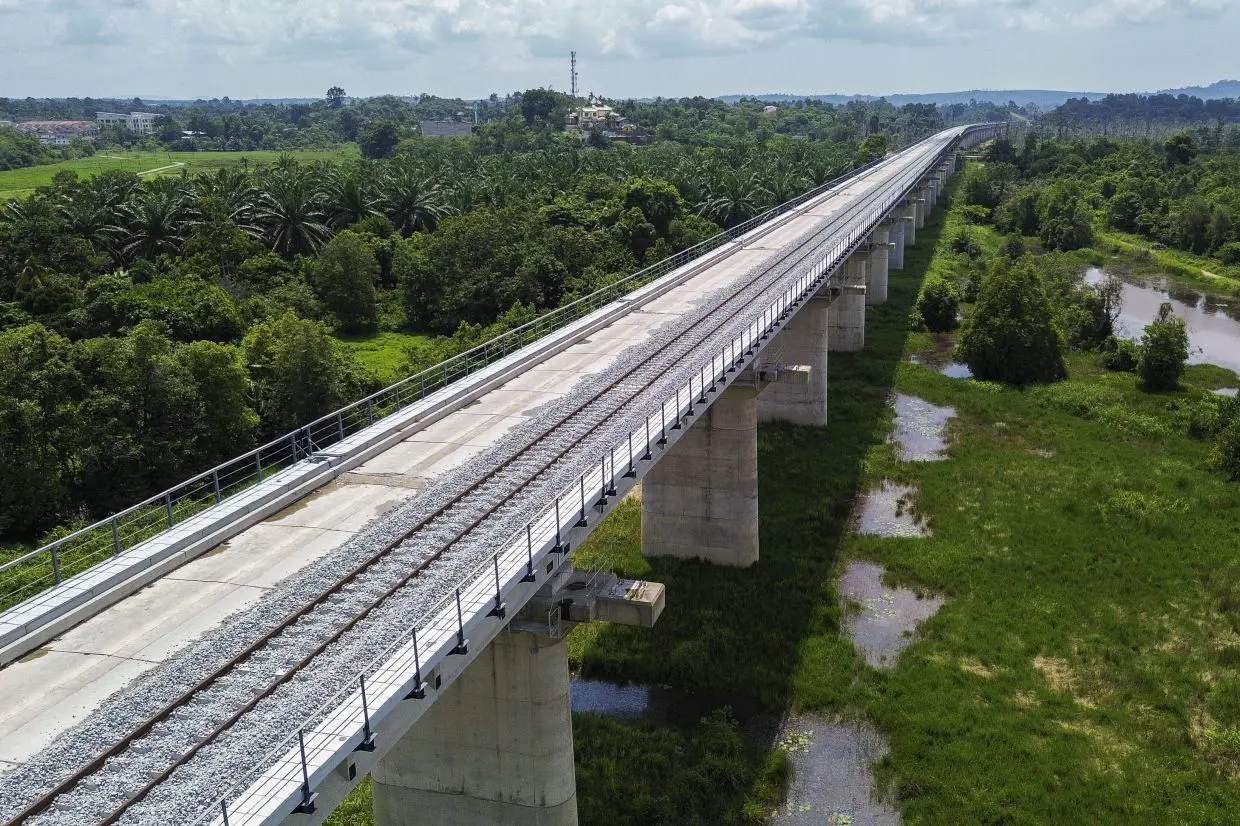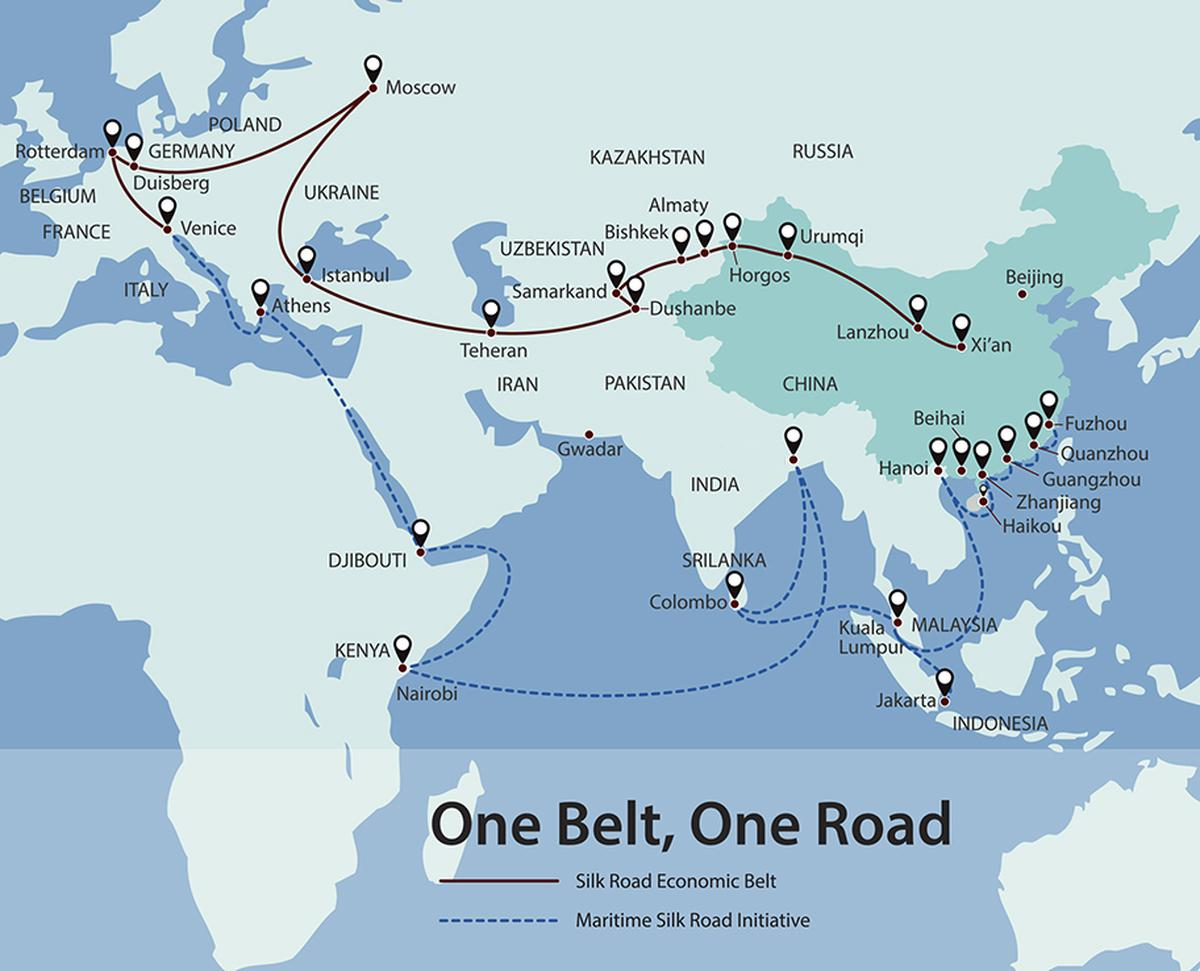Belt and Road Initiative (BRI)
The Belt and Road Initiative (BRI) is arguably the most ambitious global infrastructure and economic development strategy in modern history. Announced by Chinese President Xi Jinping in 2013, the BRI aims to recreate the ancient Silk Road by connecting Asia with Europe and Africa through a network of overland and maritime trade routes. The project, which includes investments in infrastructure (roads, railways, ports, energy facilities), industrial zones, and digital connectivity, is designed to enhance China's global trade dominance and secure its geopolitical influence.
South Asia holds strategic importance in the BRI due to its geographic position at the crossroads of major trade routes. China's growing influence in this region—especially through infrastructure investments in Pakistan, Sri Lanka, Bangladesh, Nepal, and the Maldives—has raised significant strategic concerns for India. New Delhi views the BRI as a threat to its regional dominance and sovereignty, particularly due to the China-Pakistan Economic Corridor (CPEC), which passes through Pakistan-administered Kashmir, a territory claimed by India.
India's response to the BRI has involved a combination of economic, strategic, and military countermeasures to reduce dependence on Chinese infrastructure and expand India’s own influence through alternative connectivity projects like the Chabahar Port and the India-Middle East-Europe Economic Corridor (IMEC). India's strategy reflects a broader geopolitical rivalry that pits the world's two largest emerging powers—China and India—against each other in a contest for regional dominance.
Historical Background of the BRI and India's Strategic Responses
Understanding the historical context of the BRI and India's counter-strategy requires an exploration of both the long-term strategic ambitions of China and India’s evolving response:
- Origins of the BRI
- The BRI was officially launched in 2013 by Chinese President Xi Jinping under the name "One Belt, One Road" (OBOR).
- It consists of two major components:
- Silk Road Economic Belt – Overland trade routes connecting China with Europe via Central Asia
- 21st Century Maritime Silk Road – Maritime trade routes linking China with Southeast Asia, the Indian Ocean, Africa, and the Middle East
- China's strategic motivation behind the BRI included:
Reducing over-reliance on domestic infrastructure development
Exporting surplus industrial capacity
Establishing global trade dominance
Securing supply chains and energy routes
- Early South Asian Engagement with BRI
- In the initial years, South Asian countries were enthusiastic about BRI investments due to promises of economic development and infrastructure upgrades.
- Pakistan became the centerpiece of the BRI in South Asia with the launch of the China-Pakistan Economic Corridor (CPEC) in 2015 – a $62 billion network of roads, railways, and energy projects.
- China signed key infrastructure agreements with:
- Sri Lanka – Development of Hambantota Port
- Maldives – Construction of the Sinamalé Bridge
- Bangladesh – Padma Bridge and power plants
- Nepal – Road and rail networks
- India’s Initial Response (2015–2018)
India’s initial reaction to the BRI was cautious but firm:
- In 2015, India formally objected to CPEC’s route through Pakistan-administered Kashmir, calling it a violation of Indian sovereignty.
- India declined to attend the first Belt and Road Forum in 2017, citing concerns over the strategic implications of CPEC.
- During this period, India began to focus on bilateral infrastructure
projects to counterbalance China's growing influence, including:
Development of the Chabahar Port in Iran
Strengthening ties with Japan through the Asia-Africa Growth Corridor (AAGC)
Increasing naval presence in the Indian Ocean
- Intensification of the Rivalry (2018–2023)
From 2018 onwards, China accelerated its BRI investments in South Asia, leading to increased strategic tensions:
- The completion of major CPEC projects (e.g., Gwadar Port) strengthened China’s strategic foothold in the Indian Ocean.
- Sri Lanka’s decision to lease Hambantota Port to China for 99 years after defaulting on loans became a symbol of "debt-trap diplomacy."
- China increased military cooperation with South Asian nations, including:
- Supplying submarines to Bangladesh
- Military drills with Pakistan
- Expanding naval operations in the Indian Ocean

India's Response (2018–2023):
India escalated its countermeasures through a combination of:
- Diplomatic pressure – Urging neighboring countries to avoid BRI debt
- traps Military expansion – Strengthening naval presence in the Indian Ocean and Quad cooperation
- Trade and infrastructure alternatives – Launch of IMEC and increased investment in ASEAN countries
Major Strategic Shifts in 2024–2025
The strategic rivalry between China and India has escalated further in 2024–2025 due to several key developments:
China-Pakistan Economic Corridor (CPEC) – Renewed Expansion
- In 2024, China announced a new phase of CPEC worth $20
billion focusing on:
Expansion of Gwadar Port
New rail and road links to Xinjiang
Development of Special Economic Zones (SEZs)
India’s Counter-Response:
- India increased border surveillance and military presence along the Line of Control (LoC) in response to China's deepening ties with Pakistan.
- India issued formal diplomatic protests to China and the UN.
IMEC – Moving from Planning to Execution
- The India-Middle East-Europe Corridor (IMEC) saw major progress in
2024:
Construction of key rail links in Saudi Arabia and the UAE
EU committed €8 billion to support IMEC development
Reduction of trade transit time by 40%
Outcome: IMEC is expected to divert trade traffic away from China-controlled ports and routes.
Naval and Military Engagement in the Indian Ocean
- China increased naval presence in the Indian Ocean through:
Deployment of submarines and destroyers near Sri Lanka and the Maldives
Expansion of naval bases in Djibouti and Hambantota
India's Response:
- India expanded joint naval drills with the US, Japan, and Australia under the Quad
- India secured naval docking rights in the Maldives and Sri Lanka.
Economic Competition and Financial Leverage
- China continues to offer low-interest loans to South Asian nations, often tied to infrastructure projects.
- India responded by offering soft loans and direct financial grants to counter Chinese influence.
Outcome: India’s loans come with fewer strategic obligations, making them more attractive to smaller nations.
Comparative Strategic Summary: China vs. India (2024–2025)
| Aspect | China’s BRI Strategy | India’s Counter Strategy |
|---|---|---|
| Infrastructure | CPEC, ports, energy grids | IMEC, Chabahar Port |
| Maritime Influence | Gwadar, Hambantota, Djibouti | Naval bases in Maldives, Sri Lanka |
| Diplomacy | Strategic alliances with Pakistan, Sri Lanka | Closer ties with Japan, ASEAN |
| Debt Strategy | High-interest loans | Low-interest loans and grants |
| Military Presence | Expanding naval dominance | Strengthening Quad cooperation |
The rivalry between India and China over South Asia is shaping the future of global geopolitics. While China’s BRI has already established a deep economic and strategic presence, India’s alternative infrastructure and diplomatic strategies are starting to challenge China’s dominance. The coming decade will likely witness intensified competition as both nations seek to control critical trade routes, supply chains, and strategic military positions.













